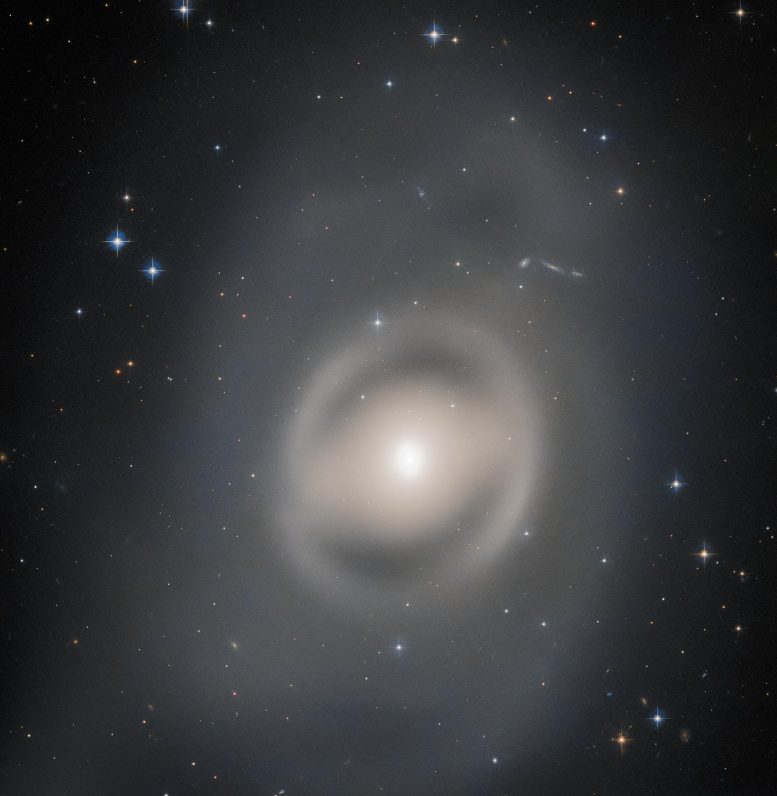
NASA/ESA Hubble Space Telescope captured an illuminating image of the lenticular galaxy NGC 6684, located around 44 million light-years from Earth in the constellation Pavo.
The Hubble Space Telescope reveals a mesmerizing image of the lenticular galaxy NGC 6684, bathed in a soft light. This image was captured using Hubble’s Advanced Camera for Surveys (ACS). The galaxy is located approximately 44 million light-years from Earth in the constellation Pavo. Named from the Latin term for peacock, Pavo is a constellation situated in the southern sky. It is one of four constellations collectively known as the Southern Birds.
Characteristics of Lenticular Galaxies
Lenticular galaxies, such as NGC 6684, are lens-shaped in their structure (lenticular means lens-shaped). They have a large disc but lack the prominent spiral arms characteristic of galaxies like the Andromeda Galaxy. This leaves them positioned somewhere between elliptical galaxies and spiral galaxies, and results in a diffuse, ghostly appearance. Further enhancing its spectral and somewhat insubstantial appearance, NGC 6684 lacks the dark dust lanes typically seen threading through other galaxies.
The Universal Galaxy Census
The data for this image were collected during a program titled ‘Every Known Nearby Galaxy,’ which aims to observe all galaxies within a range of 10 megaparsecs, or approximately 32.6 million light-years. This initiative targets galaxies not previously observed by the telescope. Prior to the start of this program, Hubble had observed roughly 75% of these proximate galaxies. The completion of this census is expected to provide valuable insights into the stars that make up a broad variety of galaxies across a multitude of environments.
1 Comment
The shape is very common and fascinatingly wavelike. I’m biased to think this is an elliptical moving toward condensing into a spiral, so the bar may already be showing a characteristic length. The perimeter is not yet well organized but I’m guessing it is nearly MW sized.
A favorite ripple-effect galaxy is NGC 474, it looks like a good example of a “shell galaxy” and resembles to me an unevenly illuminated frosted Fresnel-like concentric double ripple lens with a perimeter which I suppose is about twice the overall diameter of this galaxy and the MW.
Spirals in what seems to be collapse (more like a solidifying phase than a condensing phase) generally lack the even-ness of for example NGC 7742’s shrunken-appearing ring compared to for example Hoag Object’s non-collapsed ring.